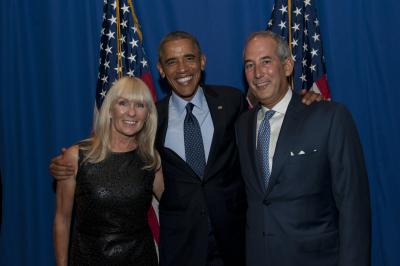"Workflow" is defined by Wikipedia (the term is shunned by most established (read print) dictionaries) as "a sequence of connected steps … a sequence of operations declared as work of a person [or] a group of persons."
I have always found the term to be a sadly overused example of marketing doublespeak — what’s wrong with just saying "the pattern or method of work" in plain English. However it does capture one of the few ways in which companies such as Thomson Reuters have been able to make money on and with the internet.
Substantially all of our products combine information and software to support professionals in doing their jobs. This is as true of WestlawNext for the practicing attorney as it is for Thomson Reuters Eikon for the swaps trader. It is this tight integration of content and instructions which we have labelled "intelligent information."
Another company this time from the consumer world which is routinely (and legitimately) praised for its tight integration of media and software is Apple. In Apple’s case it goes further to include the tight-coupling of elegant hardware as well but at base what they do supremely well is meet the media consumer’s needs or "workflow" or perhaps "playflow." Because Apple makes it so easy for me to synch my iTunes library with my iPad and iPhone (4.0 of course) I don’t bother integrating diverse content myself onto a Zune (if you can still find one) or other generic MP3 player.
Similarly it has always struck me as ironic that the same kid who would not dream of paying for a full 4’33" song through iTunes will happily pay $1.99 for a 10 second ring tone drawn from the same track. Is the reason not again "workflow" or convenience? Unlike me this user is happy to go to the trouble of downloading "free" music (and likely violating copyright in the process) but when it comes to then editing the track down to the key ringtone-perfect refrain and synching it to his phone he is happy to pay for the convenience.
So what we are left with in the end is that user convenience drives a significant portion of consumer and professional consumption of content. And come to think of it what’s so terrible about making money giving customers what they actually want?






Great points Tom! Shrewd branding campaigns focused on the target market have also contributed to the success in establishing a strong presence in the market. Customers are driven to buy applications because they want to be in the
in the 90’s the word of the day was throughput. It too was overused but mostly because no one understood the term. Throughput was all about how well one’s computer dealt with all the connections it had all the input it was fed; including from the human. Fast-foward 20 years and throughput is never mentioned. Now the human is the bottle neck because the computer lives in the infoglut. To my mind workflow is cutting around the gristle and getting to the meat of the job at hand. Consider the fighter pilot: dealing with enemies weather wing men ground threats etc. To cope with all this data they were given the heads-up-display. In the same light proper workflow management is about survival in business.
Thomas Davenport said that the more an organization knows about a term or concept relevant to it’s business the less like they are to have a common agreement on what it means. Which is perhaps why Plato said “The beginning of wisdom is the definition of terms.”